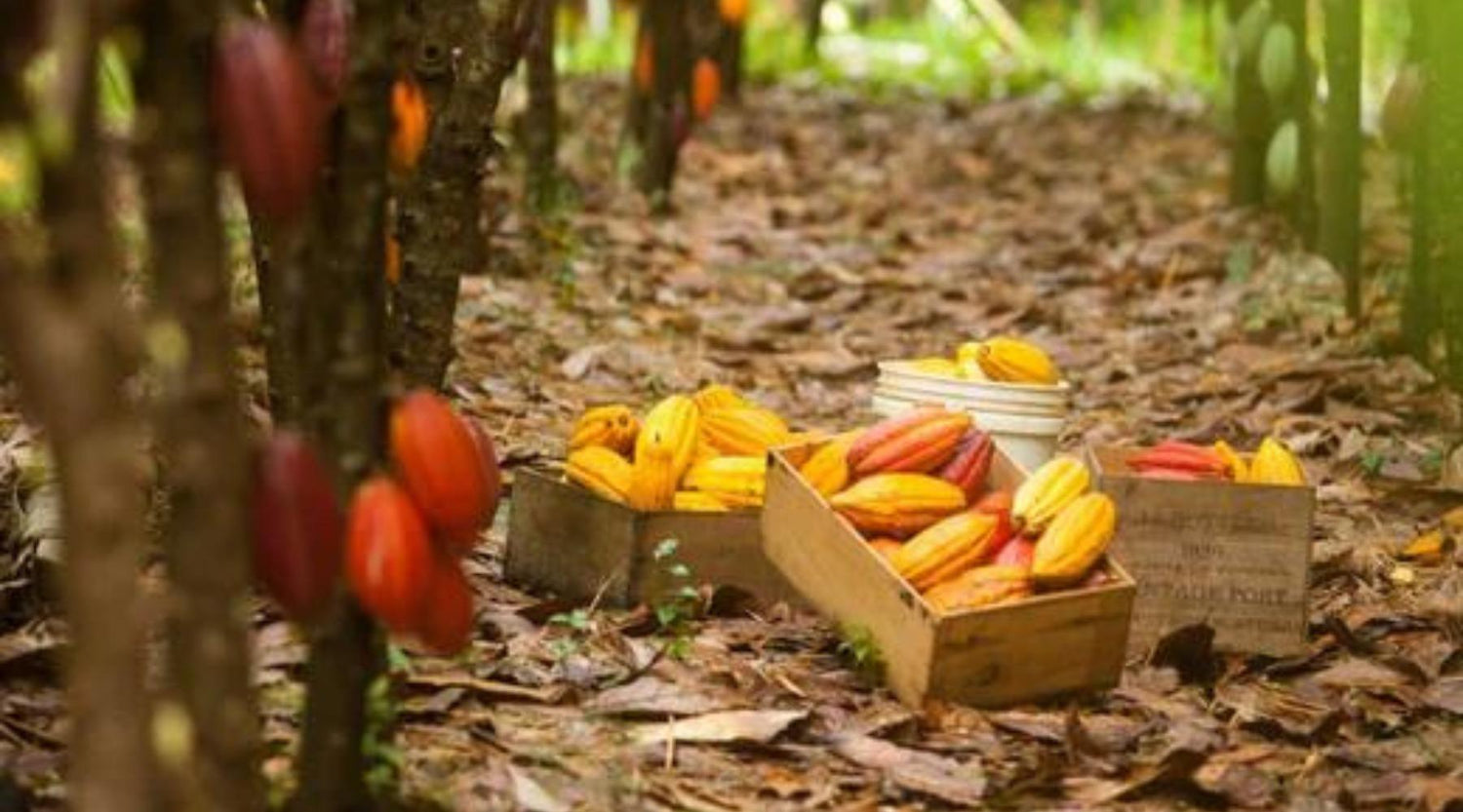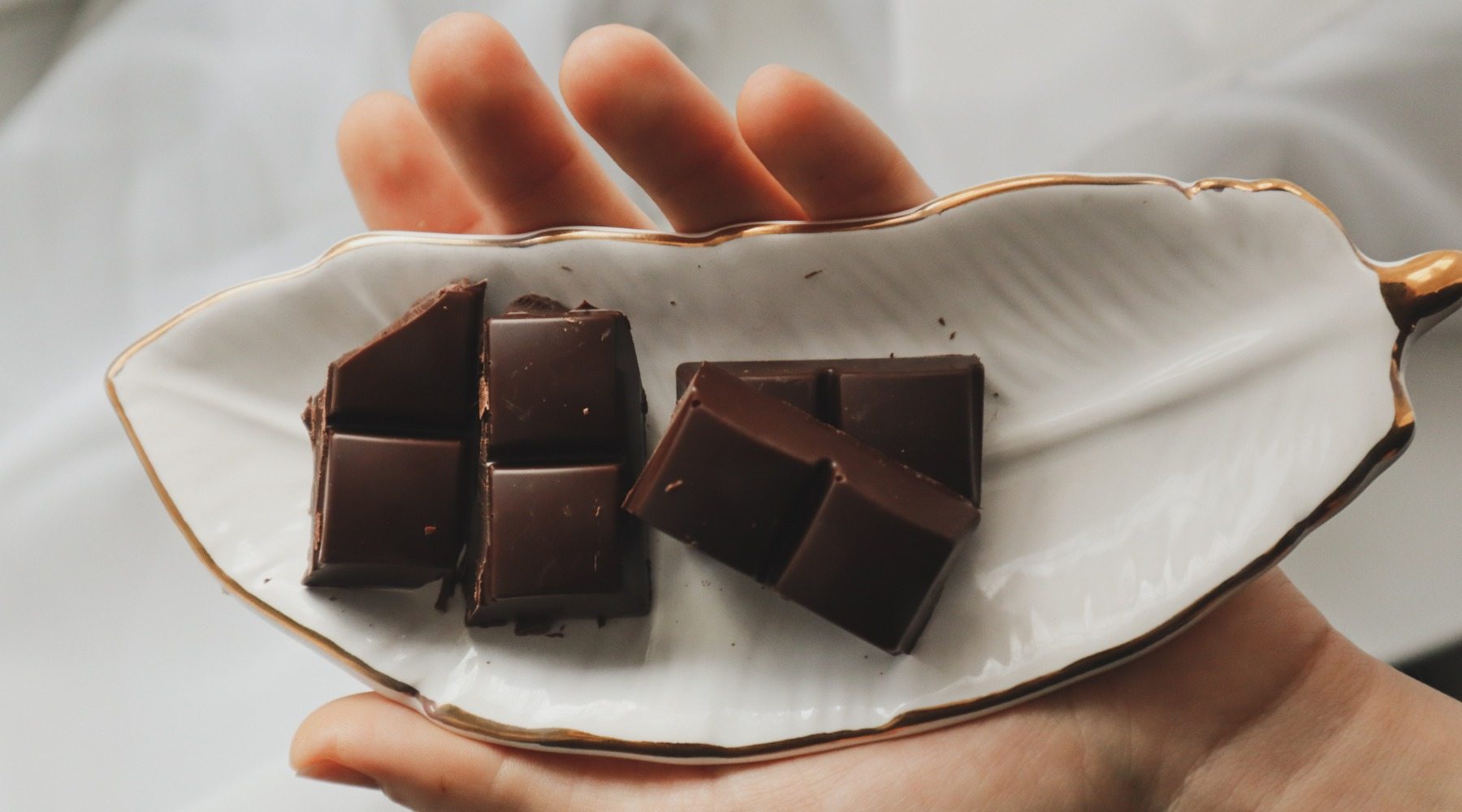The cocoa plant is a very sensitive plant that needs a lot of care. It prefers to grow in the company of many other plants and trees. However, the ever-increasing demand for cocoa worldwide has meant that cocoa cultivation now mainly takes place in environmentally harmful monocultures. And although the plant originally comes from South America, the two main growing countries today are in West Africa: Ivory Coast and Ghana. To this day, cocoa is also grown in Central and South America as well as in Southeast Asia. You can find out here how cocoa is grown and harvested.
From cocoa cultivation of rare varieties to mass production
While chocolate used to be a luxury good for the elite, today - in various forms - it is an indispensable part of any supermarket. Initially native to Central and South America, European colonialists quickly discovered cocoa. The development of processing machines in the 17th century - which could process cocoa beans into chocolate in large quantities - enabled further development towards mass production. While the cocoa drink was previously primarily used for representational purposes by emperors and aristocrats, the general public could now also access the sweet good. The consequence? Increasing demand for the raw material cocoa.
Besides that  ripe cocoa pods on the cocoa tree ©Lydgate Farms
ripe cocoa pods on the cocoa tree ©Lydgate Farms
Where does cocoa grow?
New growing areas for cocoa had to be found quickly because the Central and South American growing areas did not produce sufficient yields. At the same time, there were and are narrow natural limits because cocoa only grows near the equator. The cocoa plant also needs temperatures of at least 20 degrees - although it doesn't like heat - and a minimum amount of precipitation, which in turn must be appropriately distributed throughout the year. The European chocolate producers - the British and the French - quickly identified their West African colonies as new cocoa-growing countries. And the Dutch their colony Indonesia.
To this day, West Africa is the center of cocoa cultivation. Over 60% of the world's cocoa comes from Ivory Coast and Ghana alone, which is why trade in cocoa is one of the most important economic factors for these countries. The remaining 40% of global cocoa cultivation is mainly distributed between Indonesia, Ecuador, Cameroon, Nigeria and Brazil. It is currently estimated that cocoa is grown in a total of 128 countries near the equator in the world. A total of 118 countries only account for three percent of total cocoa cultivation. And

Harvesting cocoa pods with a machete ©Lydgate Farms
How does cocoa grow?
Cocoa cultivation is definitely an art in itself. In order to protect cocoa trees from pests and diseases, they need a lot of care. And, as already mentioned in the introduction, cocoa trees grow particularly well in green society, in permaculture, which, however, is something that smaller growing countries have specialized in. On regular cocoa farms and plantations, however, it is important to keep the areas as free of other plants as possible.
This still happens today primarily through manual work. At the same time, farmers have to constantly grow new plants in order to grow seedlings. In countries like Ghana and Ivory Coast, there are over 1,000 cocoa plants per hectare. Newly planted trees only bear fruit after three years at the earliest; after about 5-7 years they have reached the optimum of their production potential. After around 20 - 30 years the yield decreases - ideally the younger trees have reached their optimum production.
 Freshly harvested cocoa pods ©Lydgate Farms
Freshly harvested cocoa pods ©Lydgate Farms
The harvest of the cocoa fruit
In contrast to many other fruits, the cocoa pods on the cocoa tree do not ripen at the same time. The harvest times therefore vary from October to April (this is the main harvest time) and May to August (i.e. the secondary harvest time). During this time, farmers identify the ripe cocoa pods, cut them directly from the branches with machetes, bring them to central collection points, open them by hand and remove the cocoa beans from the husks. At this point, the cocoa beans still have little in common with the brown, fragrant cocoa beans that some people enjoy pure or caramelized .
Before this happens, however, a few steps must be taken. Farmers separate the cocoa beans from the pods and prepare them for fermentation. This produces a certain amount of pulp waste, which great startups like KOA convert into super tasty cocoa fruit juice. By the way, you can find out more about the fermentation process of cocoa here. After the cocoa beans have been fermented in wooden boxes for a few days, they have to be dried for several days before they are finally ready for further processing. All of these steps are extremely labor-intensive, must be closely monitored and are still carried out by hand. In West Africa in particular, this small-scale work is mostly carried out by small farmers. The livelihood of entire families often depends on a few hectares of farmland.
Are you interested in the topic? You can learn a lot more about this in our digital chocolate tasting team events and go on an exciting taste journey together with your team in virtual team building.
FAQ about cocoa cultivation
Where is cocoa grown?
Cocoa can basically be grown anywhere along the equator belt, that is, all over the world in the strip between 20 degrees north and south of the equator.
In which countries is the most cocoa grown?
60 percent of the world's cocoa comes from just two countries in West Africa, Ivory Coast and Ghana. Much of the remaining cocoa comes from Indonesia, Ecuador, Cameroon, Nigeria and Brazil. And only about 3 percent come from 118 other countries near the equator.
What are the problems with growing cocoa?
One of the main problems is that the cultivation of industrial cocoa takes place on monocultures, which are very bad for the environment. There are also extremely poor working conditions on such cocoa farms, the workers receive very low wages and some children also work there. You can find out more about chocolate and child labor in this article .
Which country grows the most cocoa?
Most of the world's cocoa comes from Ivory Coast.
Can you grow cocoa in Germany?
Unfortunately, Germany does not have the geographical and climatic conditions to successfully grow cocoa.
How is cocoa harvested?
Because the cocoa pods ripen on the trees at different times, the harvest still takes place manually. The farmers cut the ripe pods off the trunk with a machete.
Where does cocoa come from?
The cocoa plant originally comes from South and Central America. You can find out more about the history of chocolate in the linked article.
What machines do you need to harvest cocoa?
As already mentioned, the cocoa harvest is still mainly done manually, with a machete.
What are the conditions for growing cocoa?
Climatic conditions for growing cocoa are constant temperatures around 20 degrees and sufficient rainfall. This occurs along the equator, in the area 20 degrees north and south of it.
Where is fair trade cocoa grown? And where is sustainable cocoa grown?
Fair and sustainable cocoa cultivation takes place in all growing countries, but unfortunately to a limited extent. The only difficulty for us consumers is finding really fair cocoa. Even seals like the Fairtrade seal are controversial and do not necessarily guarantee that the cocoa consumed comes from a truly fair processing process, from cultivation to processing (in this article you will find out what the criticism of the Fairtrade system looks like ). In our shop you will find the finest chocolate, drinking chocolate, cocoa nibs and other cocoa products that were produced under fair and sustainable conditions.


